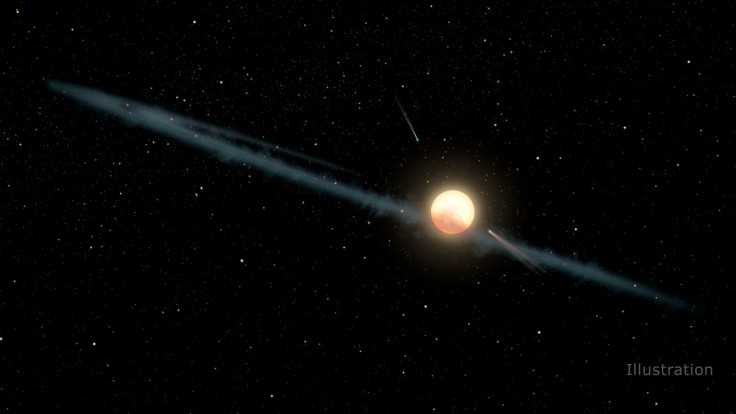NASA Addresses Rumor: Dimming Of Star Not Caused By Aliens

Unusual behavior coming from the star known as KIC 8462852, Boyajian’s Star, or Tabby’s Star for short, has caused plenty of hypotheses to circulate about what could be causing apparent dimming there. The star, nicknamed for the lead author on the original paper on the star Tabetha Boyajian, goes through dips in brightness which have been observed from Earth. The brightness dips have eliminated up to 20 percent of the brightness in just days. The star also goes through longer dimming periods.
But new evidence from NASA instruments, studied by researchers, suggests that the dimming can be attributed to an uneven dust cloud moving around the star, effectively blocking some of its light from observers.
This theory is grounded in scientific data, while other are not. There’s one theory that the star varies in brightness because there’s an alien superstructure inside of the star harvesting energy from it, said NASA in a press release. Another theory is that the star cosmically swallowed an unstable planet. But these theories are quite unlikely.
New information gathered using the Spitzer and Swift missions in addition to the Belgian AstroLAB IRIS observatory support the theory that the dimming is caused by a moving cloud. By observing the planet in infrared and ultraviolet light separately, researchers found that there was more dimming in the infrared spectrum than in the visible wavelengths. The researchers involved expect that the cloud is orbiting the star about every 700-days or so.
The detailed findings were published in the Astrophysical Journal on Tuesday. The researchers found that the objects causing the dimming at Tabby’s Star are likely tiny, just a few micrometers in diameter, but still large enough that they would stay in orbit around the star. This dust is called circumstellar dust and the reason it merely dims is that it’s not quite large enough to block all light from a star like Tabby’s Star, said the release from NASA.
Amateur scientists and citizen scientists played a role in the research that led to the most recent conclusion. Some people involved had no formal training, said NASA, but their observations and work on publicly available data helped the researchers come to their final conclusions that were published.
The dust explains the longer-term dimming events, but they don’t full explain the shorter-term events. To figure out those events, NASA will need to do more research on the star. One hypothesis is that they’re due to a “swarm of comets,” a common source of dust.
New telescopes will be necessary to study Tabby’s star because those that were trained on it earlier, like the Kepler, have moved on to other areas of space, said NASA.
© Copyright IBTimes 2024. All rights reserved.





















